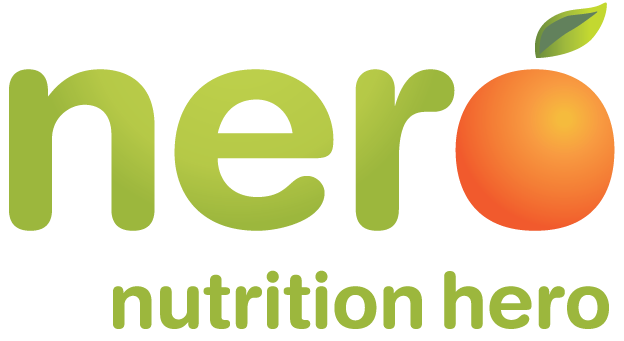Most children spend at least 7 hours at school each school day. .
Their time at school is physically and mentally challenging. Good nutrition helps provide them with the energy and vitality required to function effectively in the classroom and on the sporting field
Children that have a more substantial lunch at school are also less likely to binge or graze on high energy/fat snack foods when they get home.
Most parents appreciate the importance of good nutrition and aim to provide healthy food choices for their children. Creating “the magic lunchbox” (whereby the healthy contents magically vanish – by being consumed) is important for children’s overall nutrition.
Uneaten and discarded lunches are a waste of ‘food’, ‘effort’ and ‘money’. All of which are rare and precious commodities.
This article aims to outline some suggestions on how you can create a “Magic Lunchbox” for your child.
Due to the amount of information included, the article is separated into 2 parts (Part 1: Nutrition Tips for the Healthy Lunchbox and Part 2: Healthy and Practical Lunchbox Suggestions).
Part 1: NUTRITION TIPS FOR THE HEALTHY LUNCHBOX
- Children eat different amounts of food according to their growth patterns. For smaller appetites pack smaller serves, i.e. Fruit and vegetables chopped up, sandwiches quartered. The foods appear more appealing, are easier to eat, and there is still time to play.
- Calcium is often lacking in children’s diets – provide calcium rich food each day i.e. Low fat milk, cheese and yoghurt.
- Fruit has more fibre and less energy than fruit juice. Fruit should be a regular lunchbox item.
- Our busy, time-poor lifestyle is conducive to using convenience (pre-packaged) foods. Unfortunately many of these foods are high in fat, salt and energy and should be used sparingly. When using convenience foods, check labels and choose foods that are higher in fibre and lower in fat and sugar.Avoid: packet potato crisps or other snacks of this type, lollies, chocolate bars, chocolate biscuits, cordials and soft drinks, and some muesli bars.
- Involve your children in choosing their own lunch from a range of healthyoptions.
- Use wholegrain or wholemeal breads (for sandwiches where possible), and cakes rather than the low-fibre white varieties.
- Encourage children to eat crusts on sandwiches. If this is impossible, then cut off the crusts before packing to reduce waste.
- Use a variety of breads so that the children don’t get bored when the same ingredient is used regularly.
- To ensure sandwiches stay fresh, put them in a plastic wrap, snap-lock sandwich bags and\or an airtight lunchbox to prevent them from getting squashed.
- Use foil or greaseproof paper for smaller children who may have trouble taking off plastic wrap.
- Ensure filling is not too dry or too moist. If the filling is too dry, add alittle lowfat yoghurt or grated vegetables to make the sandwiches more stable.
- Cutting sandwiches into different shapes – squares, triangles, animal shapes, fingers, rolled up or as small rolls provide interest.
- If the mornings are always a rush, save time by freezing prepared sandwiches. You can prepare and freeze quantities for about 2 weeks and choose suitable fillings such as: lean cooked meals, lean skin-free chicken, canned fish, low fat cheese, grated cheese, avocado, baked beans or a hard boiled egg. They can be removed from the freezer and put straight in the lunchbox and will thaw out (and be fresh) by mealtime.
- Most lunchboxes are kept out at room temperature for many hours – an ideal environment for undesirable bacteria. By including frozen foods; i.e. frozen sandwiches (see above), frozen drink bottles (leave room for expansion) or poppers, frozen oranges or mandarins, yoghurts and \or an ice pack.

Lunchboxes come in interesting shapes, colours and materials appealing to children. Choose an
- Wash lunchboxes daily and make sure that they are completely dry with the lid off before storing. Discard all foods brought home that can become contaminated.
- For the little children, (i.e. Preschoolers) avoid foods that could potentially cause choking such as: popcorn, cherry tomatoes, nuts or cheerios with skins.
- Avoid peanuts or any foods containing peanut products as these can cause severe allergic reactions in some children. Discourage children from swapping or sharing their lunch for this reason.
- Encourage children to drink lots of water while at school either from water
bottles (frozen overnight) or from the bubbler. - Remember, parents are the best role models (even if the children won”t admit it). If parents eat well, then the children are more likely to copy. If children refuse foods, encourage them to just give it a try (without an unpleasant scene). If they don’t like it, then try the same food item again, prepared in a different way, in a couple of weeks time and repeat the exercise. As in Dr Suess’s famous book – “Green Eggs and Ham” you don’t know whether you will like it or not until you have tried it.
Part 2: HEALTHY AND PRACTICAL LUNCHBOX SUGGESTIONS
The first part of “The Magic Lunchbox,” article included some nutrition tips for the healthy lunchbox. Part 2 (below) outlines some healthy and practical lunchbox items that will magically vanish (by being consumed by your child) during their physically and mentally challenging school day.
When putting together a “Magical Lunchbox” include a variety of healthy foods from each of the food groups (breads and cereals, fruit and vegetables, lean meats or protein substitutes, and dairy foods). Healthy lunchbox suggestions are outlined below under the following headings:
- The Main Meal
- Dairy,
- Fruit and vegetables
- Snacks
This way you can mix and match healthy ideas, provide variety and interest and ensure a balanced meal. Time and space precludes me from outlining recipes, although there are many recipe books available on the market.
1) THE MAIN MEAL:
- Leftovers from the night before
- Sandwiches with simple fillings on different types of breads (pita, rolls, jaffles, bagels, french, paninis, muffins, crumpets, mixed grain, wholemeal, high-fibre white, rice or corn cakes etc) cut in small sizes for little people.Try these sandwich fillings:
- Light cream cheese, grated carrot, sultanas and celery
- Low-fat cheddar cheese, sliced apple and celery
- Cottage cheese, celery tuna and sprouts
- Cottage cheese, chopped dates, pineapple and sprouts
- Avocado, celery, tomato and lettuce
- Avocado, grated carrot and bean sprouts
- Lean ham and fruit chutney
- Chopped skinless chicken, cottage cheese and tabouli
- Mashed bananas and cottage cheese
- Homos, dried tomato and sprouts
- Quiches
- Pastas and noodle dishes
- Rice dishes
- Fish cakes, nuggets
- Potato baked or as salads ie: with tuna, cheese etc.
- Meat and vegetable filled triangles
- Boiled eggs (kept cool in the lunchbox)
- Chicken nuggets
- Pizza
- Baked beans or tinned spaghetti
2) DAIRY :
- Plain or flavoured milk (or Soy with calcium added). Try freezing the night before.
- Yogurts, fruche, fromage frais, fruit and custard packs, tropical smoothies,
mousses, ricotta and yogurt dip, yogurt jellies, and rice custards, plain custards. - Cheese fingers, slices, triangles
3) FRUIT AND VEGETABLES :
- Fresh fruit (children tend to prefer it sliced which is easier to handle). For cut fruit that tends to go brown i.e. Apples – squeeze lemon juice
- Fruit snacks
- Dried fruit
- Jellied fruit
- Canned fruit
- Fruit juice (frozen popper used as ice block) 100% fruit juice preferred.
- Fruit salad
- Fruit kebabs (ie. piece of banana, strawberry, rock melon and paw paw per kebab)
- Frozen oranges
- Fruity yogurt salad
- Cherry tomatoes (for children older than 5 years as they can be a choking risk)
- Fruit smoothies and fruit whips
- Celery, carrot or zucchini sticks topped with soft cheese and sultanas
- Corn (canned or microwaved\steamed)
4) SNACKS :
- Healthy cakes, fruit buns and biscuits
- Pikelets, Muffins and scones
- Muesli and fruit bars (check food labels and choose brands lower in sugar)
- Celery boats
- Rice cakes or low-fat cracker biscuits with scrape of reduced fat cheese or vegemite
- Rice crackers or baked wheat pretzels
- Mini wheat or weetbix breakfast cereal
- Popcorn and you could add a small amount of dried fruit for variety
- Pita chips (cut pita bread into triangles, sprinkle with parmesan cheese and bake for 15-20 minutes)
Despite all the theory and best intentions in the world, children can be unpredictable, unfathomable and exasperating, and therefore, putting theory into practice is always a challenging.
Reference:
1) The Lunchbox Book produced by Nutrition Australia (Queensland Division) Inc.
82 Latrobe Tce
Paddington Qld 4064
Telephone: (07) 3876 2677
Fax: (07) 3876 2254
Approximately $10.00 + postage
Written by: Maya McColm (My Dietitian)
APD Dietitian\Nutritionist in private practice (0408 431800)









